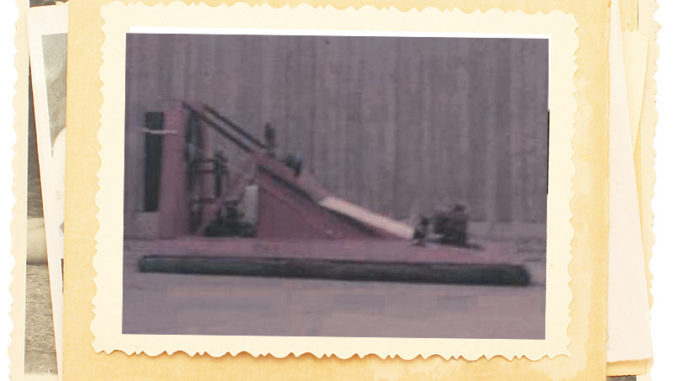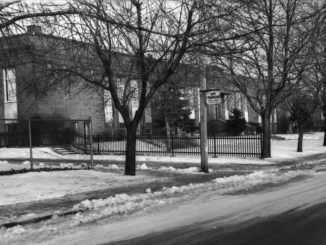
The grainy photo reminds me that this all unfolded more than 43 years ago in Leaside. When I was 15 and living at the corner of Parkhurst and Donegall, I was apparently not content with the traditional extracurricular pastimes like bike-riding, swimming, hockey, baseball and cutting the lawn, though I enjoyed all of them. This might not be a surprise if you’ve read some of my other columns, particularly the daredevil bike-jumping, streaking, and amateur private investigator pieces. It seems I was easily bored.
In my teens I became interested in how things worked. To my twin brother’s puzzlement, I dropped $25 of hard-earned babysitting money on a plastic see-through working model of a V-8 engine that took me weeks to assemble. Yes, several families were, in fact, prepared to leave their children in my care for hours at a time. Back then I was also fascinated by things that flew — still am. Remind me to report on the Falcon series of full-sized hang gliders a classmate, Geoff Elmer, and I — at the tender age of 12 —designed, built (badly), and tested (unsuccessfully) in Talbot Park down the street from our home. The hang gliders were about as air-worthy as an anvil.
But even those aerodynamic failures did not quench our interest in flight. So that same classmate — you know, the one who insisted I be our designated homemade hang glider test pilot — and I decided to fly a little closer to the ground. We proceeded to design, build (badly), and test (successfully this time) a full-sized, single-seater, twin-engine hovercraft. It was 12 ft. long and 6 ft. wide with a 10-horsepower vertical shaft engine driving the lift fan at the front, and a 340 cc snowmobile engine powering the thrust fan at the back. That’s probably already more than you wanted to know about recreational air cushion vehicles. Anyway, we built it out of wood in a neighbour’s garage in return for free snow-shoveling. It took us all year and all our modest savings to finish the hovercraft.
We painted it bright orange and stenciled the name on the front. We dubbed it the GTH1, a very cool name, we thought. It stood for Geoff and Terry Hovercraft 1. On paper, it would fly on its cushion of air over land, water, and ice. We never tested it on water. Given our dubious construction skills, the GTH1 was about as watertight as a colander.
But I’ll never forget the day we started up the lift engine for the first time in the garage. I sat in the hovercraft and actually felt it magically rise from the concrete floor. Geoff could push the 400-lb. vehicle around the garage using one hand. However, the balance from front to back was off a bit. The only way it would freely float on its 8-inch air cushion was with several bricks loaded into the hull to keep the craft level. Yes, we made the whole thing heavier so it would fly properly. There was probably a better solution to our balance problem, but the bricks were fast and easy.
We officially tested the GTH1 in the early spring of 1975 in the parking lot of the Ontario Science Centre (photo). We used a vertical vane in the thrust fan’s slipstream for directional control. It certainly wasn’t as precise as the rack and pinion steering on my mother’s Volkswagen, but it got the job done. It was so satisfying to literally fly across the parking lot with at least some measure of navigational control. On one flight across the lot the GTH1 suddenly dropped to the ground and skidded to a stop. We had no idea what had happened until we discovered I’d driven over a sewer grate. All the air forced underneath the craft by the lift fan had disappeared straight down the sewer shaft taking our cushion pressure with it.
The GTH1 stayed at the Science Centre for a few years thereafter. Much to my parents’ relief, I headed off to university to study engineering before my friend Geoff and I could act on our growing interest in rockets. Sadly, Geoff Elmer passed away a few years ago, but I believe building that hovercraft in Leaside all those years ago was a seminal experience in both our lives.





